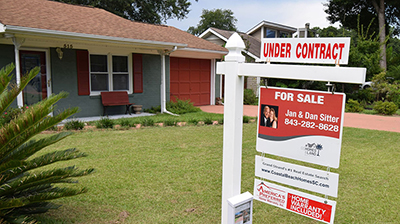
Black Knight: More than Half of Borrowers Using Rate Buydowns

Black Knight, Jacksonville, Fla., said 57 percent of recent borrowers used rate buydowns to purchase a home, with nearly 25 percent paying two or more points upfront.
The company’s monthly Mortgage Monitor Report found 57% of borrowers locking in rates paid at least a half-point as part of a permanent buydown; 44% paid at least a full point, and nearly a quarter bought down their rates with two points or more.
The report noted such buydowns peaked in September-October, when as many as seven in 10 (71%) borrowers paid points on permanent buydowns, and four of 10 (43%) paid two points or more. Overall, borrowers paid an average of 1.25 points, down from a peak of 2.03 points last fall, at an average cost of $4,300 per borrower for the week ending Jan. 21, vs. $6,900 for the week ending Oct. 1.
Black Knight Data & Analytics President Ben Graboske said affordability remains a challenge. “We can see definite signs of a January uptick in purchase lending on lower rates and somewhat lower home prices,” he said. “For context, prior to the pandemic and resulting housing market boom, average points paid in 2018-2020 were closer to 0.5, with a corresponding cost of around $1,500. Purchase borrowers – who paid an average of 1.16 points in the week ending Jan. 21, 2023 – now make up 81% of new rate locks; cash-out refi borrowers (~14% share) paid nearly twice that, for an average of 2.06 points. Additionally, at least 3% of purchase borrowers received temporary buydowns, with 1/0s, 2/1s and 3/2/1s the most prominent market offerings, setting up some degree of potential for payment shocks down the road.”
The report noted locks on purchase mortgages soared 64% from the first through the fourth week in January. “Affordability still has a stranglehold on much of the market, with the monthly mortgage payment on the average-priced home more than 40% higher than it was this time last year,” Graboske said. “It’s also important to keep January’s surge in purchase activity in perspective. While up, purchase locks were still running roughly 13% below pre-pandemic levels for the last full week of the month.”
The report also said December’s -0.45% seasonally adjusted decline was roughly on par with the 0.48% average seen over the past six months. December’s decline pushed the annual home price growth rate down to just 5.0% – now only 0.4% above its 30-year average – and the slowest home price growth rate since June 2020. In 2022 overall, the first half of the year saw home prices grow by 10.9%, while the second half saw them drop by 5.3%.
“Should the current rate of monthly declines persist, the annual home price growth rate would go negative within the next three months,” Graboske said. “Recent monthly declines represent a -3.8% to -7.7% annualized decline and, as such, may provide insight into where the annual home price growth rate may be headed in coming months. Annualized monthly declines have historically served as a good leading indicator of upcoming movements in annual growth rates, which are themselves a backward-looking metric – particularly in a quick-moving and volatile market.”
